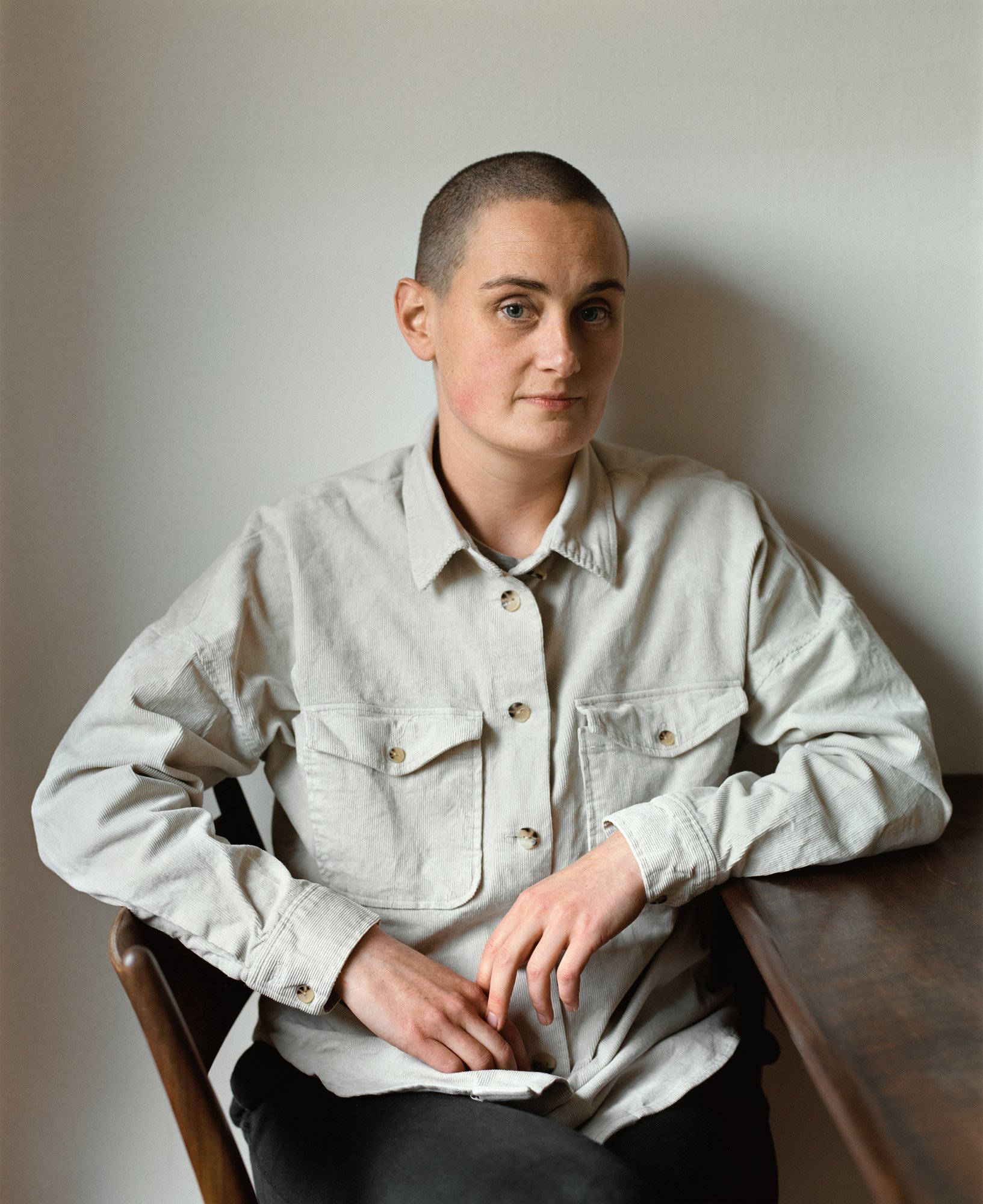Fragments of a river
‘Fragments of a River’ is a project by photographer Wouter le Duc and writer Hannah Chris Lomans. In 2019 Hannah Chris told Wouter about their non-binary identity. This inspired Wouter to make a portrait of Hannah Chris, which was the start of this project.
In his work as a portrait photographer, Wouter is fascinated by people and their inner worlds. In this project he focuses on portraying non-binary people. He visited them in their own homes. In this intimate setting he spent a long time speaking with them before photographing them in soft colors illuminated by daylight. Hannah Chris’ writing explores the power of fluidity and transformation. In this text, they bring to life a landscape in the midst of change as a way to viscerally convey to the reader the universal experience of transformation. The portraits and the captions are two worlds that exist side by side but that also begin to overlap.
The title is a reference to the famous aphorism “panta rhei” attributed to the Greek philosopher Heraclitus: everything flows, or all things are in flux. He said that you can’t step in the same river twice because it is changing constantly. This project celebrates this change process and every new form of being that emerges from it.
Anne Chris, 2021
A rectangular metal beam protrudes from the ice, reaching several feet up into the air. We are gathered in a circle around it. The metal is gray and matte. Fogged over from the cold. We wonder: could that heavy metal beam be a wick that we light with the warmth of our hands?
Sarafina, 2021
We reach out our arms. Put our hands on that freezing cold metal. When we lift them again, we see glistening hand-shaped patches, beading with sweat. For a moment, the metal is shiny, then slowly the prints fog over again.
Santi, 2021
We return each day to lay our hands on the beam. We take it in turns so that our skin doesn’t freeze. We circle each other. Almost like a dance, with the beam as our center of gravity.
Tijn & Roos, 2020
It’s something instinctive. We do it without talking about it. As if we were prepared for this to happen. We’re not surprised. We were already past surprise when this shape became visible beneath the ice.
Welmoed, 2020
There is a reason for the dance. To transfer as much body heat as possible to the beam. It takes longer and longer before the sweaty, hand-shaped patches fog over again.
Lot & Tadhg, 2020
The end of the day is when our work is the most visible. That’s when the beam is gleaming. The metal isn’t dull gray but silver. Pink, even, in the light of the setting sun. Before it gets dark we go back to our houses. The night will undo our work again while we sleep.
Tadhg & Lot, 2020
We see the beam which seems to be sliding up out of the ice a little more with every passing day. We understand: this is not a wick. This is something being born.
Selm, 2021
Late one afternoon the beam starts detaching from the ice. It rises more than thirty feet into the air and it’s beginning to tip over. We carefully lower it into our arms. We make sure it doesn’t touch the ice. It gleams gently in our arms. Clear as day.
Monika, 2020
But the beam was a wick, too. We realize that two days later when we’re standing by the lake in the morning and see the dull gray heads of three new beams protruding from the ice. Something is burning and swelling underneath.
Hannah Chris, 2020
The frozen lake. A gray-white canvas, stretched taut. Metal beams pushing through it like stubble.









